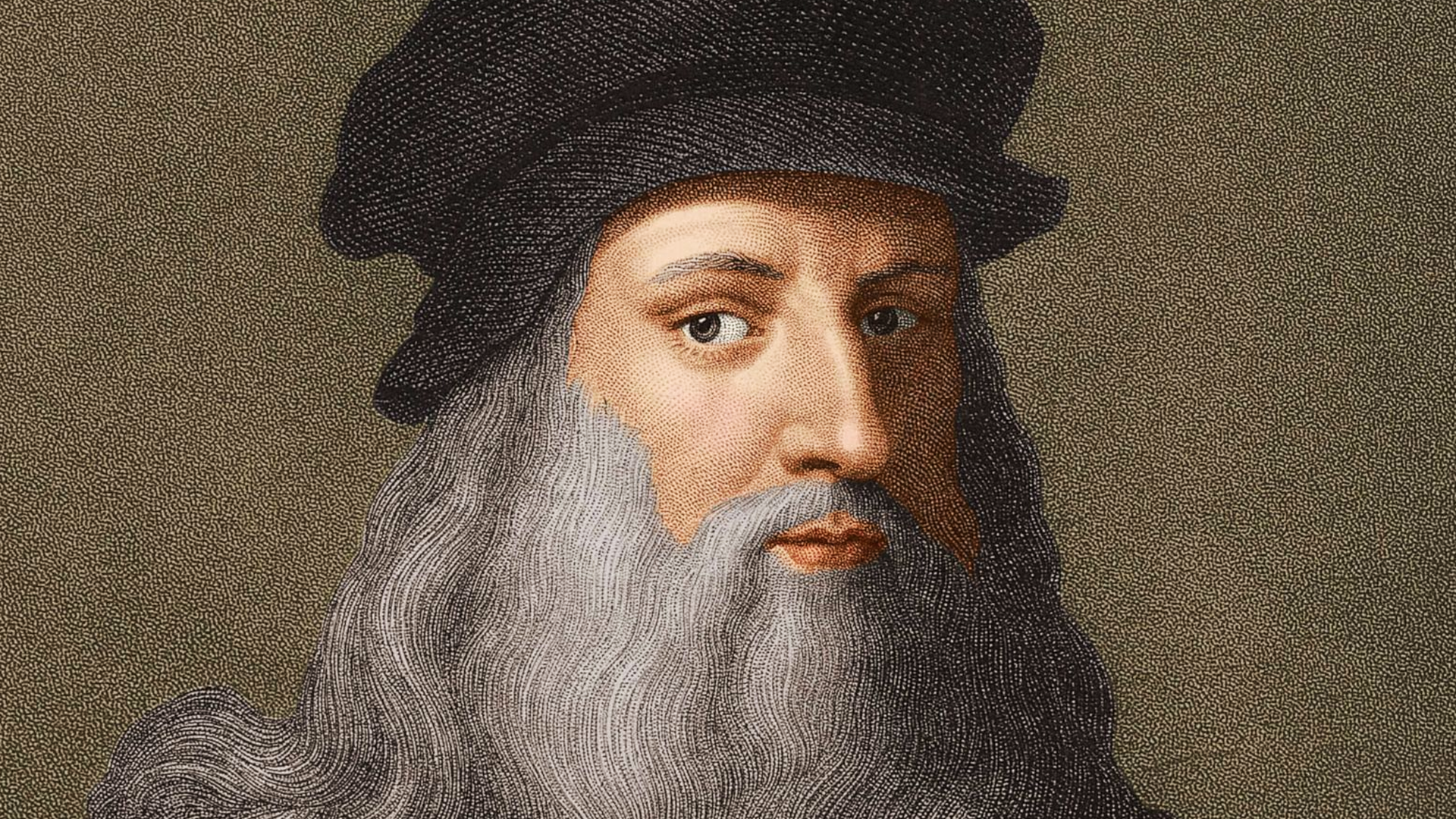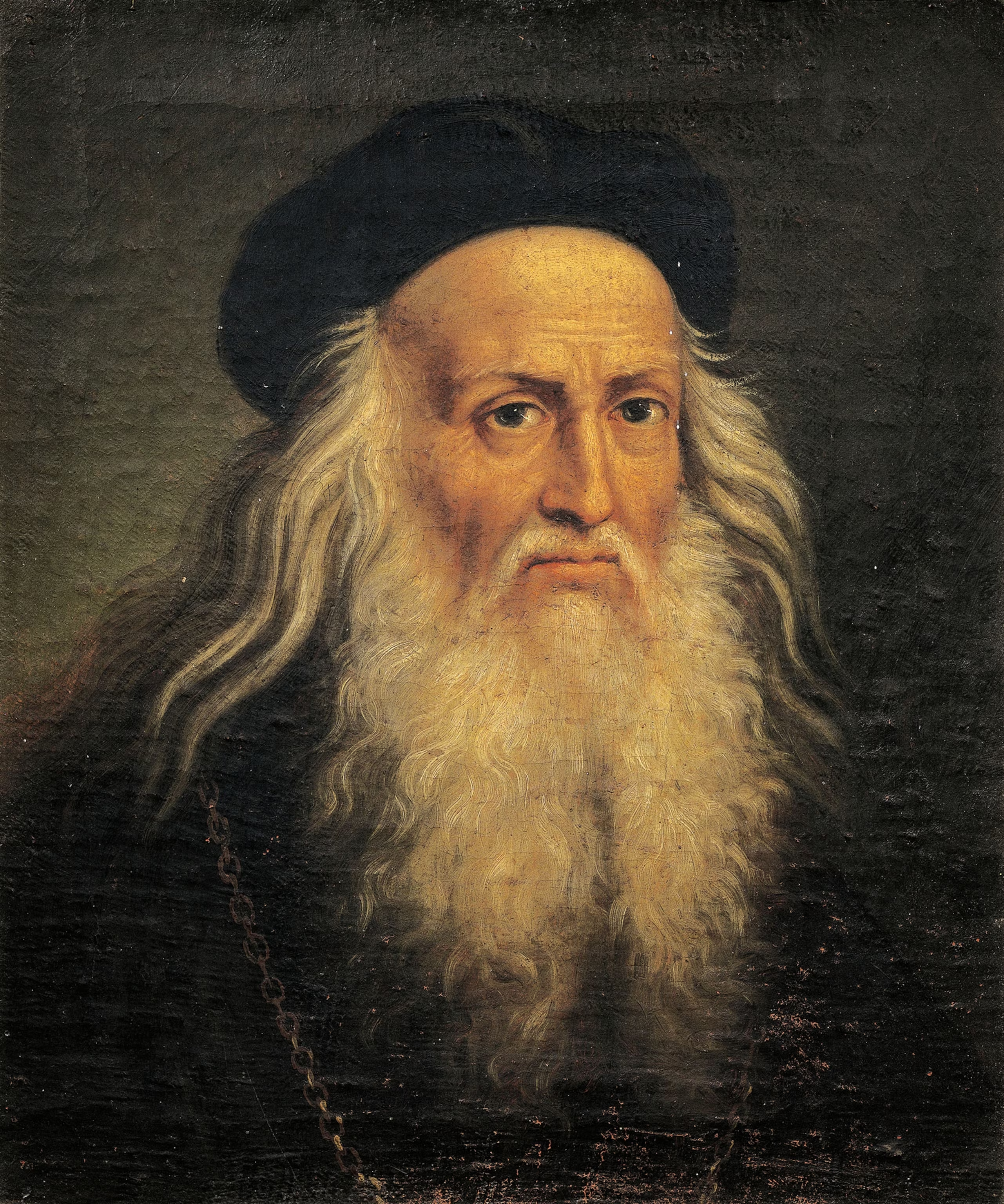Leonardo da Vinci

Biography
Leonardo da Vinci was born in 1452 in the town of Vinci, Italy, the illegitimate son of a notary and a peasant woman. Despite limited formal schooling, he developed an insatiable curiosity that became the foundation of his genius. Apprenticed to the renowned artist Andrea del Verrocchio in Florence, Leonardo learned not only painting and sculpture but also engineering, mechanics, and architecture, blending art with technical mastery.
His paintings, including the Mona Lisa and The Last Supper, set new artistic standards for realism, emotion, and composition. The Last Supper, in particular, revolutionized narrative painting through its depiction of human expressions and its balanced yet dynamic arrangement of figures. These works remain among the most studied and celebrated in art history.
Leonardo’s genius extended far beyond the canvas. He filled notebooks with designs for machines centuries ahead of their time—flying devices, armored vehicles, hydraulic systems, and innovative weapons. His sketches demonstrated a deep understanding of mechanics and natural principles, making him a visionary engineer long before modern technology could bring his ideas to life.
His anatomical studies, based on meticulous dissections of human and animal bodies, provided some of the most accurate drawings of the human form ever produced. Though unpublished during his lifetime, these works later influenced generations of scientists and artists by merging observational science with artistic precision.
Leonardo overcame significant obstacles, including the social limitations of being born out of wedlock and the technical constraints of his era. His tendency to begin many ambitious projects without completing them reflected both the breadth of his interests and the absence of modern tools to fully realize his visions.
Throughout his life, Leonardo embodied the Renaissance ideal that art and science are interconnected disciplines. His belief that 'knowing how to see' was essential to understanding the world drove his relentless observation of nature, from the flow of water to the movement of the human body.
In his final years, Leonardo worked under the patronage of King Francis I of France, where he continued to draw, design, and mentor students. He died in 1519 at the age of 67, leaving behind a legacy that continues to inspire innovation, creativity, and cross-disciplinary thinking.
Leonardo da Vinci didn’t just create beautiful paintings—he rewrote the blueprint for how we understand and shape the world. His relentless curiosity broke down the barriers between art and science, proving that creativity is not bound by discipline. He dared to imagine machines that could fly centuries before aviation, mapped the human body with unmatched precision, and captured the human spirit in paint in ways that still move us today. His work is a timeless reminder that the pursuit of knowledge, fueled by wonder, can transform both our understanding of the present and our vision for the future.
?
How did Leonardo da Vinci’s upbringing influence his approach to learning and creativity?
What can we learn from Leonardo da Vinci’s ability to connect art and science?
Why do you think Leonardo da Vinci left so many works unfinished?
How have Leonardo da Vinci’s inventions influenced modern engineering and technology?
What does the Mona Lisa’s enduring popularity say about human fascination with art and mystery?
Dig Deeper
How did Da Vinci change the world as we know it today? A true "Renaissance Man", inventor, artist & scholar Leonardo da Vinci was one of the most diversely talented individuals of all time. His "unquenchable curiosity" led him to make discoveries and inventions that were beyond his time, not to mention his numerous artistic masterpieces. Today on SciShow, Hank takes us into the mind of this incredible man and his lasting effect on society today.
Exploring the mind of Leonardo da Vinci—artist, engineer, and relentless observer of the world.
What's so special about Leonardo da Vinci's Vitruvian Man? With arms outstretched, the man fills the irreconcilable spaces of a circle and a square -- symbolizing the Renaissance-era belief in the mutable nature of humankind. James Earle explains the geometric, religious and philosophical significance of this deceptively simple drawing.
Discover more

William Kamkwamba
William Kamkwamba invented a windmill from scrap materials at age 14, bringing electricity and hope to his village in Malawi.

Thomas Edison
With over 1,000 patents and an 'invention factory' at Menlo Park, Thomas Edison turned electricity, recorded sound, and motion pictures from curiosities into global industries.

The Wright Brothers
In 1903, Wilbur and Orville Wright defied gravity and doubt by launching the first successful powered, controlled flight.
Further Reading
Stay curious!

